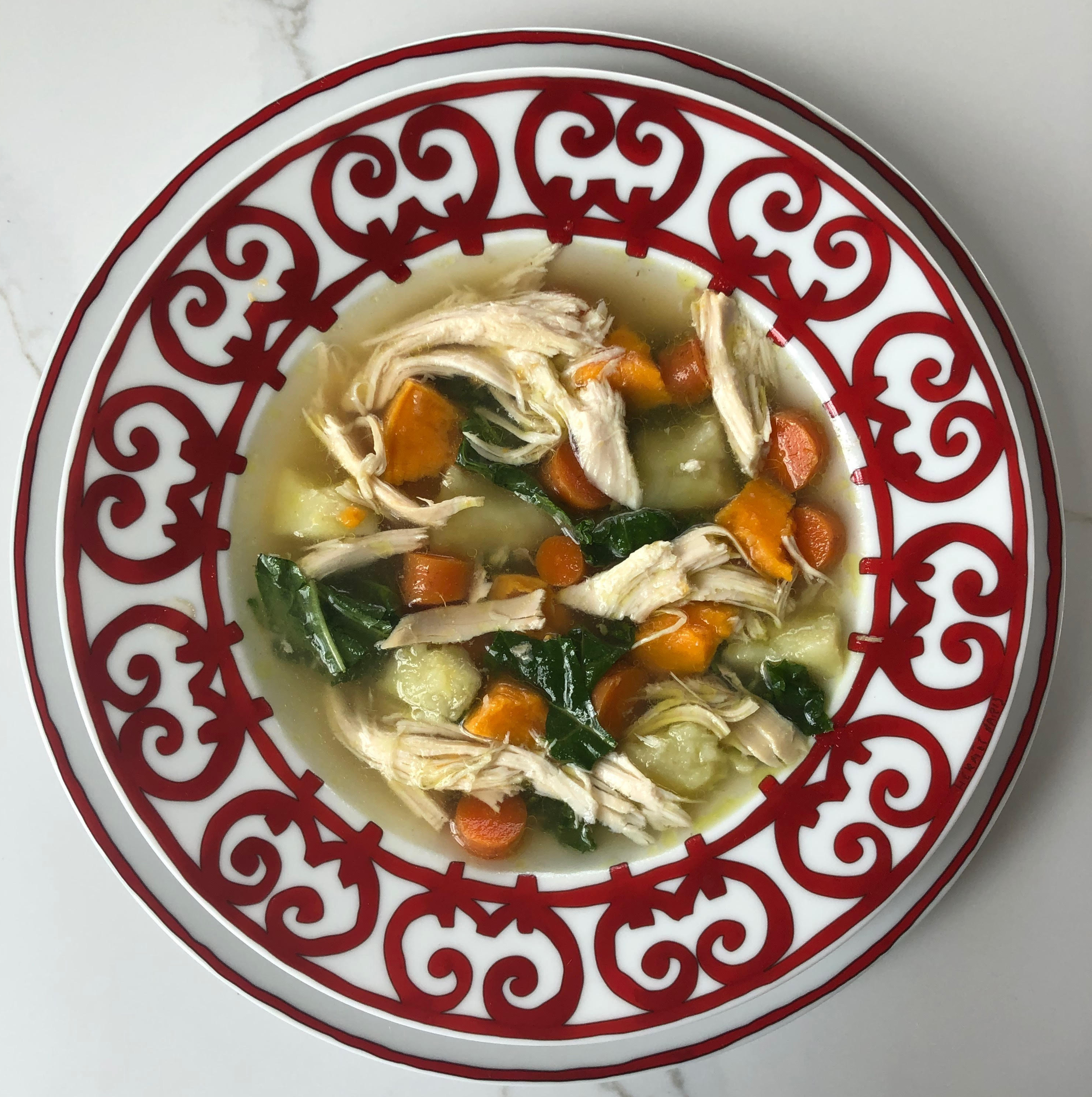Superfood Chicken Soup
This recipe crams as many superfoods into one bowl as possible. It requires no knife skills and creates complex flavors without any complex steps. Chicken soup is known to boost the immune system, have anti-inflammatory properties, improve skin, hair, and nail health, and improve digestion. Everyone loves chicken soup: it is great for a cold, for a detox plan, or to feed your family on a weeknight.
Ingredients: 1 chicken, 1 sliced onion, quarter cup apple cider vinegar, quarter cup sea salt, 1 bunch carrots, 2 peeled sweet potatoes, 2 peeled parsnips, 1 cup halved cherry tomatoes
Superfood add ins (add one, add some, or add all): 5 peeled garlic cloves, 1 bunch thyme, 1 bunch oregano, 1 bunch sage, 1 bunch rosemary, 5 slices of peeled ginger, 1 small piece kombu, 1 peeled and sliced turmeric root, 2 tablespoons coconut oil, 8 ounces destemmed and quartered shitake mushrooms, 2 bay leaves
1. Combine whole chicken, onion, apple cider vinegar, salt, ginger, garlic, turmeric, bay leaves, sage, oregano, rosemary, thyme, kombu, coconut oil in a pot. Cover with water by two or three inches. Bring to a boil. Lower heat and simmer for one hour.
2. Add sweet potatoes, carrots, parsnips, cherry tomatoes, mushrooms to pot. Bring to a boil. Simmer for one more hour. In the last 15 mintues of cooking, add kale.
3. Taste for salt. Remove chicken bones, herb stems, turmeric, ginger, and kombu. Serve. Enjoy.






















